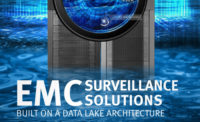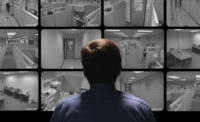Top 3 Questions Security Integrators Should Ask Before Jumping Into Commercial Audio

IMAGE COURTESY OF PSA
Three main categories of commercial audio are sound masking, background music and mass communication.

IMAGE COURTESY OF PSA
Before a security integration firm decides to jump into commercial audio, they should ask three questions: What will we offer and to whom? How do we elevate our sales, operations and service teams? And where do we start?


Every successful security integrator is looking and preparing for the next big industry game changer. A very common business practice to increase sales is to offer additional products and services to existing customers — as evidenced by the trends of recurring revenue and cybersecurity, which are major drivers in the industry. These additional offerings help create a stickiness for your brand and increase overall revenue per customer.
As technologies and solutions continue to spread across multiple industries including security, audio, video and IT, the need to differentiate and become “sticky” to customers in this dynamic field is paramount. A growing opportunity to offer a new service and set of products to customers is commercial audio. Comprised of a system of speakers, amplifiers and wiring to project sound throughout a non-residential area, adding commercial audio for a security integrator is attractive for multiple reasons:
- The skill sets required for both sales and installation/service are similar, allowing for cross-functional employment and recruitment opportunities.
- Training requirements are typically product-specific and don’t require additional licensing, which will reduce the cost (monetary expense as well as employee time) to become technically trained on products offered.
- Product availability is limited, helping to maintain gross margin.
- As skilled labor is required for fully integrated and secured installations, DIY solutions are limited, which creates a demand for trained integrator companies.
Before a security integration firm decides to jump into commercial audio, they should ask three questions:
- What will we offer and to whom?
- How do we elevate our sales, operations and service teams?
- Where do we start?
1. What Will We Offer and to Whom?
Commercial audio has many different options and integrators will need to decide what works best for them and their customer base. A few broad categories of commercial audio are sound masking, background music and mass communication.
How Security Integration and Commercial Audio Support NSCA PASS: Partner Alliance for Safer Schools
The Partner Alliance for Safer Schools (PASS) was established in 2014 to bring together expertise from the education, public safety and industry communities to develop and support a coordinated approach to making effective use of proven security practices specific to K-12 environments. The PASS tiers establish requirements for effective security system design to cover campuses throughout the United States. The initiatives of the PASS program have encouraged security integrators to offer extended services to the K-12 education vertical.
Combining security technology and commercial audio has made a seamless integration to fulfill these guidelines. In an article published by NSCA, the public school system in Littleton, Colo., was recognized for its innovative integration of security and audio systems using the PASS tiers. Their complete design combines the functionality of access control products, video intercoms with digital recorders and mass notification systems for alerts both inside and outside of schools. Having the capability of joining security and audio products into a single project design allowed the Littleton School District to install a completely integrated system of products and services to protect their students and staff. (https://www.nsca.org/littleton-public-schools-gets-gold-help-pass/)
Sound masking adds noise to match human voice frequencies into an open space to reduce and cover other unwanted sounds. With the move to open office spaces and work environments, sound masking has become a necessity. Personal and corporate privacy, medical compliance (HIPAA), along with the desire to reduce distractions and improve productivity has driven the significant growth of sound masking solutions in recent years. Major users include healthcare, education, financial and corporate verticals. Manufacturers and their product training requirements for these systems are reasonable and plentiful.
Background music is similar to sound masking, except that actual music is used to affect customers and their emotions and behavior. The customers’ response to the music is managed by the music’s pitch, volume and content. All of the same reasons to offer sound masking apply to background music, with the additional benefits of being able to influence customer conduct. There are many potential users for background music systems, including retail, hospitality, healthcare and restaurants. Several vendors offer background music as well as some that offer both background music and sound masking products. Training requirements are minimal with both vendor-sponsored and vendor-neutral varieties available.
Mass communications are systems that are used to convey important information to large groups of people over a central and unified structure. This can include tornado sirens, fire alarms, active shooter alerts, other critical/life safety messaging or general information delivery. For the commercial audio integrator, a typical project might be an intercom paging system in a commercial building. Systems could include audio paging, digital signage and email or text/SMS messaging. The list of potential clients is limitless. Education, healthcare, government, corporate and retail all have a need for mass communication systems. Depending on the system design, one or several vendors may be needed to complete the project. Many times, these systems are dual purpose and allow for background music and mass communication to be used in the same design. Mass communication systems are often subject to additional licensing requirements depending on the purpose of the design.
2. How Will We Elevate Our Sales, Operations and Service Teams?
It’s always a challenge to determine which comes first for a new product offering: a few trial installations or a robust sales effort? Truth be told, it can be done either way, depending on the individual security integrator company’s customer base or its relationship with vendors. Identify a few strong clients that have expressed a need for audio and work together to find the right solution or identify key vendor partners that are capable and willing to provide sales, operations and service training along with field-level support to start the integration process.
To prepare the sales team:
- Look internally to identify someone with the existing skills and experience to be an “integration champion” to motivate others regarding the new products and offerings, as well as serve as a contact person for the projects.
- Identify a small number of key vendors with strong sales support programs (case studies, literature, training tools, etc.) that will equip your sales team with information for their sales efforts.
- Bring the new offering to a trusted customer who previously expressed a need for a commercial audio system and work with the vendor partner to create a solution based on that customer’s project.
To prepare the operations and service teams:
- Identify people within the organization that have the skills and experience to manage the installation and ongoing service.
- Use vendor-sponsored and vendor-neutral training for installations and ongoing service.
- Utilize existing organizations for industry training and knowledge. Some good ones include www.avixa.com; www.prosoundtraining.com; and www.nsca.org.
3. Where Do We Start?
For a security integrator, laying the groundwork to introduce commercial audio to their employees and customers is essential for success. Start by opening discussions with existing customers, asking not only what general needs they have but if they also have product lines they use and what they like/dislike about those products. Ask employees what product lines they may have experience with at previous companies or projects. Host peer networking events and speak with local manufacturer’s representatives, distribution partners, friendly competitors and deployment partners in other regions regarding their preferences. Develop an internal team with representation from all appropriate departments to conduct product research and plan development. Compile all of the data and proposals into a structured deployment strategy with unified efforts and vision for success. Finally, take time to stop, analyze, measure key variables (P&L, customer satisfaction, etc.) and assess the overall success of the program. Reevaluate the strategy and its individual parts on a regular basis.
Understanding where the market is headed, what customers are demanding and how to best serve and meet those demands will position security integrators as leaders in the industry. With some concentrated and strategic efforts, security integrators can develop a new business channel in commercial audio that can bring additional revenue, increased profits and better stickiness with their existing customers as well as attract new customers. That sounds like a win, win, win!
Looking for a reprint of this article?
From high-res PDFs to custom plaques, order your copy today!







